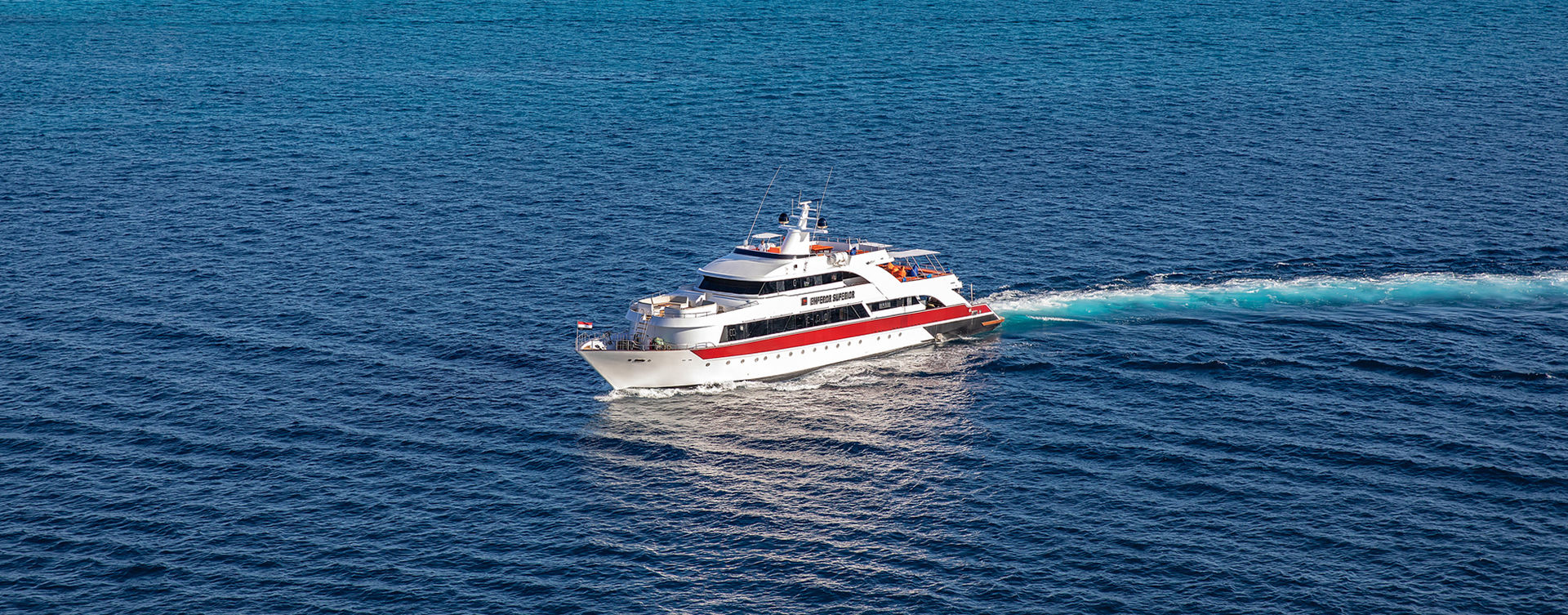
There's a lifetime of diving waiting in the Waters of the Red Sea. Scores of dive resorts on Egypt's shores access hundreds of dive sites and a first-class liveaboard fleet ups the ante with an unrivaled range of underwater adventures that take in a thriving diversity of marine life, stunning walls, prolific coral growth, world-class wrecks and big animals.
Many divers return year after year to revisit familiar attractions or discover new aquatic horizons. Among these myriad choices, there are a select number of sites that consistently top the list for rewarding underwater adventures. Here are ten that showcase the diversity and depth of Red Sea Diving.
SS Thistlegorm
The Red Sea's most famous wreck dive is a 410-foot Armed British Merchant Navy ship sunk by German aircraft in 1941. It sits upright at a depth of 100 feet, with the midships collapsed and the bow rising to within 45 feet from the surface. Access points created by bomb damage give divers windows into cargo holds that are still packed with war materiel, including weapons, ammunition caches, motorcycles, armored cars, and two steam locomotives that are a favorite subject for photographers. The site is located at the entrance to the Gulf of Suez and is visited by liveaboards and day boats departing from Hurhgada and Sharm El-Sheikh.
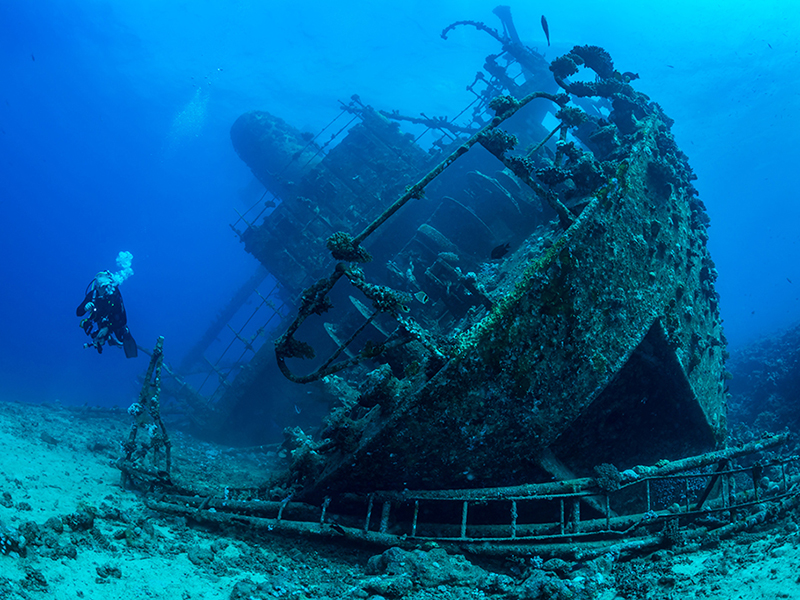
Canyon and Blue Hole
Just north of the Sinai town of Dahab, a marine sinkhole plunges from a shallow coastal ledge to depths beyond 300 feet. It's clear, current-free waters provide benign conditions for descents to recreational depths. Extended-range divers can continue down the shaft to depths of 180 feet, where a tunnel leads outward to an arch opening on a vertical wall face. An adjacent cleft in the wall known as the Canyon is an equally popular dive that begins with a descent into a limestone fissure, traverses the wall and culminates in a return to the Blue Hole through a mid-depth channel.
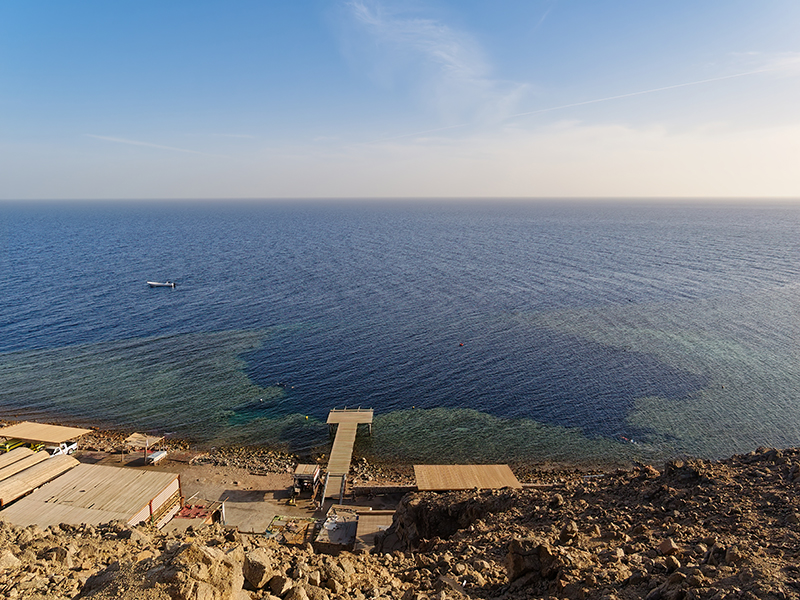
Jackson Reef
One of the top dive sites in the Sharm El-Sheikh resort area sits in the Straits of Tiran, where the Gulf of Aqaba meets the northern Red Sea. The ebb and flow of currents through this narrow passage nurtures vibrant coral formations that overgrow the raised plateau known as Jackson Reef. Divers can hunt for macro life among t corals and sand flats on the sheltered southern side of the formation or fly the currents along slopes and walls. This oceanic crossroads is also known for attracting gamefish, gray and white-tip reef sharks, seasonal gatherings of hammerhead sharks and the occasional tiger and whale shark sighting.
Shark and Yolanda Reefs
Walls, coral gardens, lots of fish and a wreck. Divers get a multi-faceted underwater adventure at this favorite site in the waters of Ras Mohammed National Park. This drift dive begins with a drop onto a plateau covered in a carpet of anemones and their attendant clownish. Divers then ride the currents along the edge of a precipitous mile-deep wall where a pair of large pinnacles known as Shark and Yolanda from a 100-foot deep shelf to within five feet of the surface. The outer faces of these formations are noted for exceptional coral cover and an abundance of marine life that includes large malabar groupers and massive schools of barracuda, jackfish and batfish. The dive ends with a visit to a debris field from the merchant ship Yolanda, which scattered its cargo across the sea bed before disappearing into the depths.
The Brothers
Rising from deep offshore waters to break the surface as small islands, the seamounts known as Big and Little Brother are a requisite stop on most all liveaboards cruising the north-central Red Sea. The main event is sharks, as these formations are the oceanic equivalent of an oasis in the desert. Regular visitors include reef, hammerhead, oceanic white-tip and thresher sharks, and lucky divers may meet a manta ray or a whale shark. The appeal of the Brothers goes beyond sharks, as there are shallow and deep reefs covered in hard and soft coral that shelter an abundance of macro life, a pair of wrecks to explore, and big walls swarmed by schools of tuna, trevallies and barracudas. This site is visited by liveaboards sailing from Hurghada, Port Ghalib and Marsa Alam.
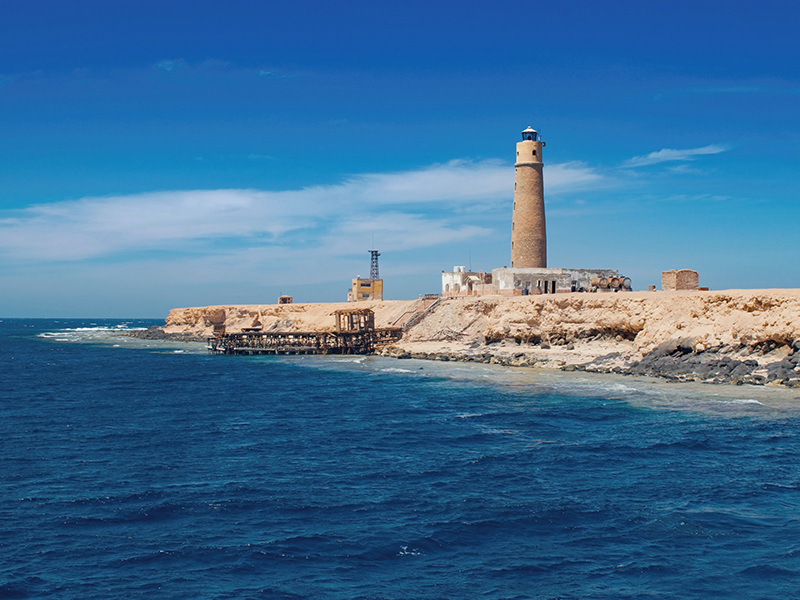
Abu Dabbab
A bay twenty miles north of the Egyptian resort town of Marsa Alam provides divers and snorkelers with a unique opportunity to swim and dive with dolphins. The near-shore waters of Abu Dabbab Nature Preserve encompass a diversity of underwater ecosystems that include sand flats, seagrass meadows and coral ridges. Dugongs and sea turtles are often encountered grazing in the shallows, and the same area holds hidden treasures like guitar sharks, ghost pipefish crocodile fish, blue-spotted rays, scorpion fish and rare seahorses. Stone ledges at the mouth of the bay are covered in hard and soft corals, while small pinnacles attract schools of goatfish, sweetlips, butterflyfish, snappers and batfish. The site's easy accessibility by land or water combine with moderate depths to make this a site that can be enjoyed by all divers.
Elphinstone Reef
One of the north-central Red Sea's most popular destinations for both liveaboards and day trips, this elongated stand-alone reef has steep walls to the east and west, with plateaus to the north and south that stair-step up to snorkel depths. The site is noted for prolific hard and soft coral growth, and for the diversity of reef fish and invertebrates it harbors. Sunlit shallow areas of the reef are a favorite with macro photographers and critter hunters. Elphinstone's walls attract a who's who of large marine life, including turtles, dolphins, several species of rays, a variety of both solitary and schooling pelagic fish, and more than a dozen species of sharks
Daedalus Reef
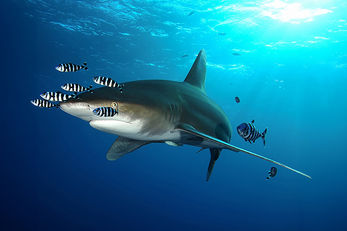
Sitting within a protected marine zone in the center of the Red Sea, this remote and less-visited oceanic outpost is considered a top destination for seasonal encounters with schools of scalloped hammerhead sharks. The shark show that takes place along the reef's steep outer walls can include gray reef, greater hammerhead, oceanic whitetip, silky, thresher, tiger and whale sharks, plus mantas rays, turtles, sailfish and dolphins. After swimming towering walls decorated with massive gorgonian sea fans and multi-hued sponges, divers can move to a shallow upper plateau covered in a rich carpet of soft corals fed by nutrient-rich currents.
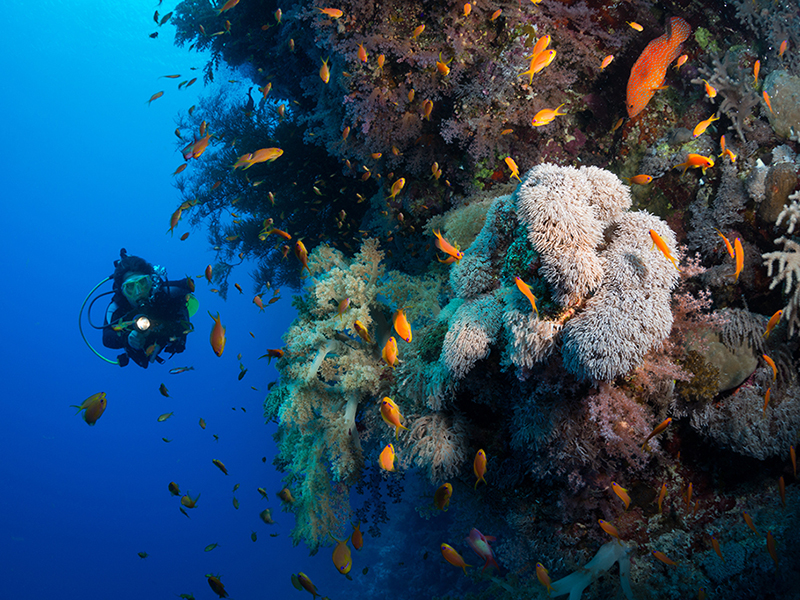
Sha’ab Sataya
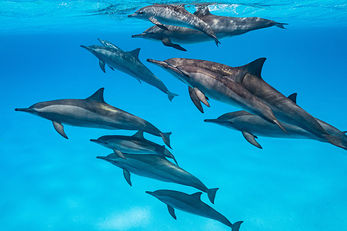
The Fury Shoals are a chain of 20 reefs that extend offshore from Egypt's southern coastline. The region is known for an abundance of less-visited dive sites, profuse coral growth and intricate underwater landscapes of pinnacles, caverns and walls. A must-do dive in this region is Sha’ab Sataya, aka Dolphin Reef. The outer north-facing flanks of this large reef plateau drop sharply to a deep wall, providing sightings of sharks, rays and pelagic predators coming in from blue water. The sheltered southern face of the reef features pinnacles covered in soft corals and a mid-depth hard-coral garden that opens to a protected bay where divers can meet the site's resident pods of spinner dolphins.
St. Johns Caves
The St. John's Reefs are the southernmost sites visited by Egyptian liveaboards. In addition to vibrant marine life and healthy coral reefs, this area is known for habilis, which are stone pillars that rise to or break the water's surface. Some of the most dramatic of these formations are found at St. John's Caves. An L-shaped reef to the west of the pillars is riddled with a maze of shallow to mid-depth caverns. These grottoes and tunnels are a favorite with photographers who document the interplay of shadow and sunlight streaming in from overhead openings. The coral heads and sand patches outside the caves reward critter hunters with an exceptional variety of reef fish, cryptic bottom dwellers and rare finds.
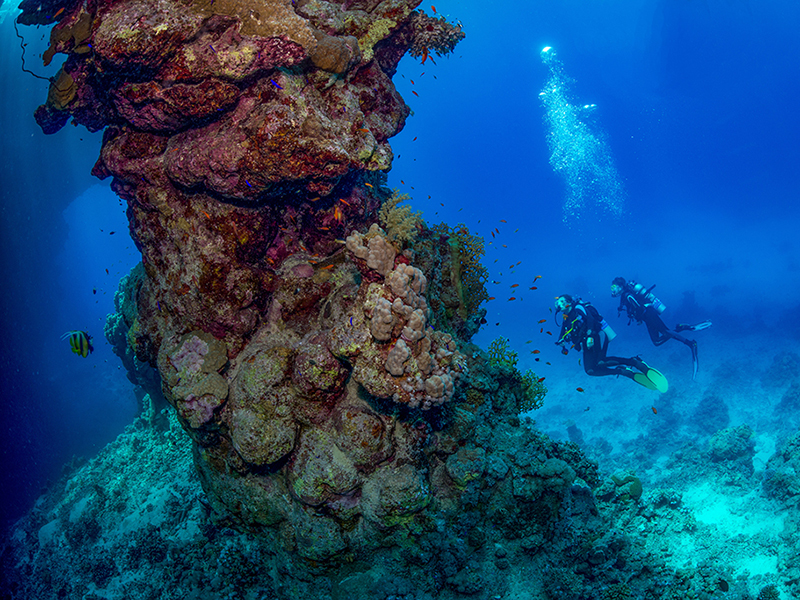
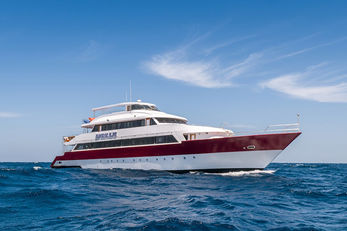
Caradonna can put you on these favorite Red Sea sites and many more. We work with the premier liveaboards of the Emperor Fleet that visits all areas of the Egyptian Red Sea, which includes the Emperor Elite and the Emperor Superior liveaboard. Contact an agent to learn more about seasons, routes and availability.